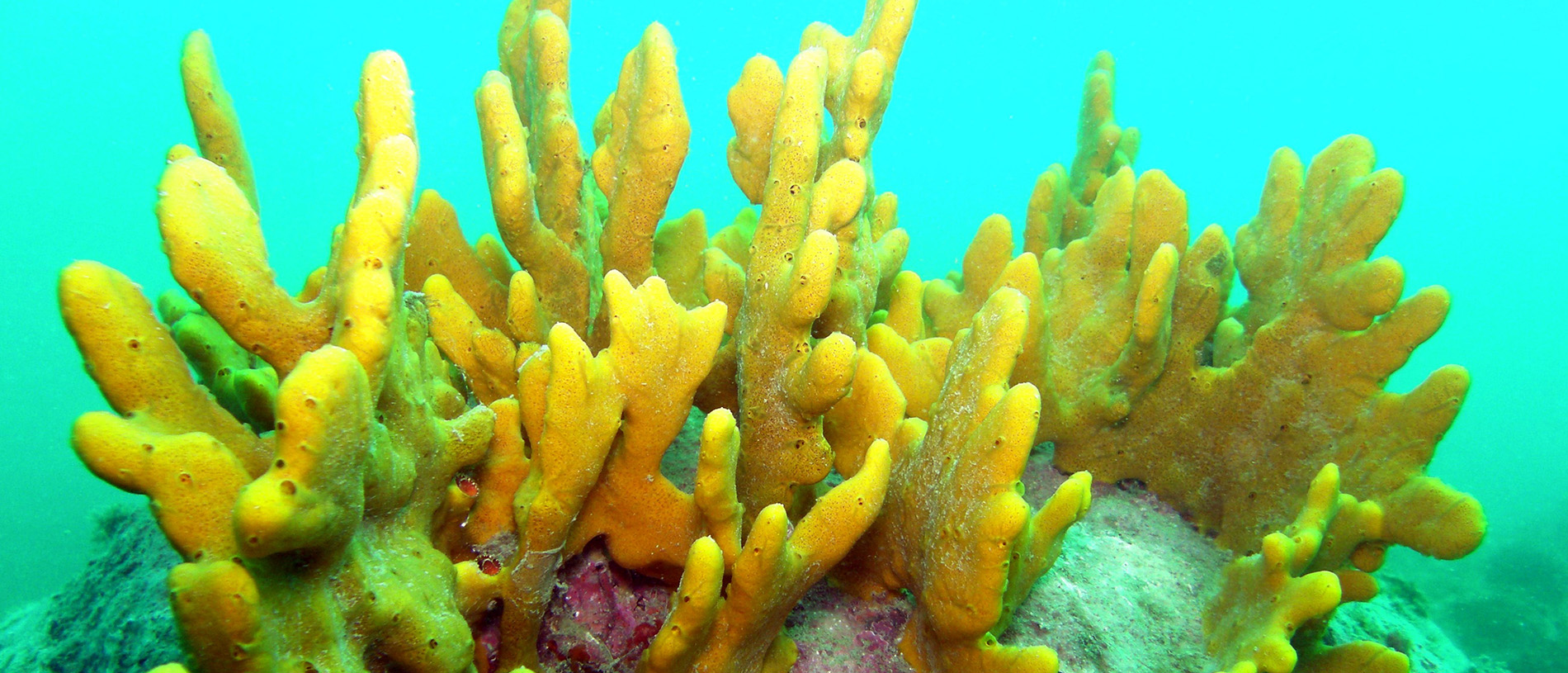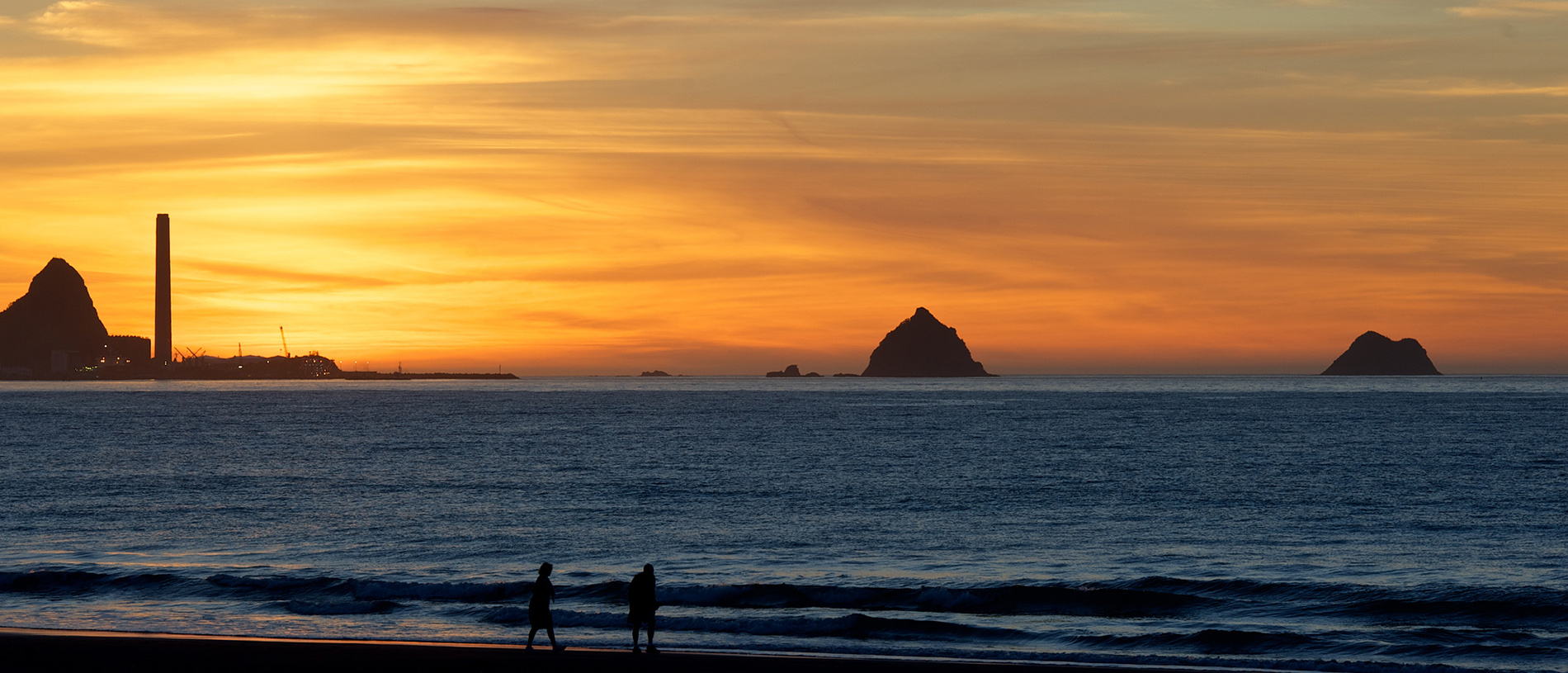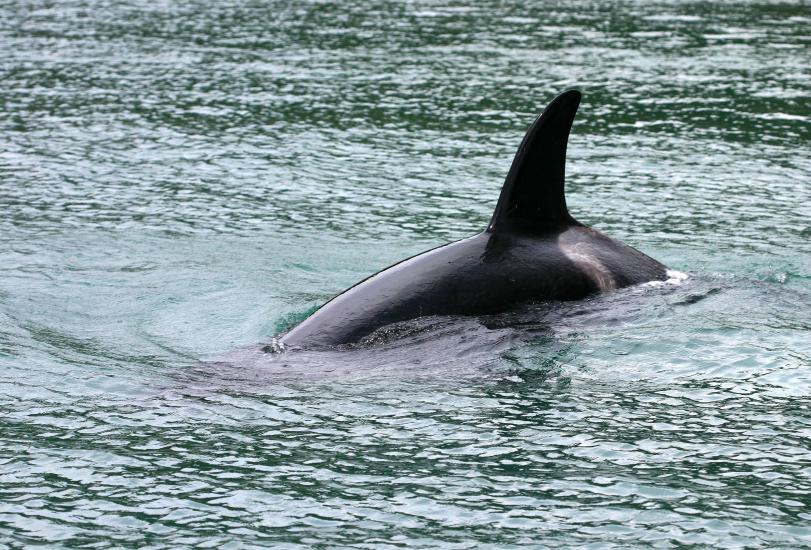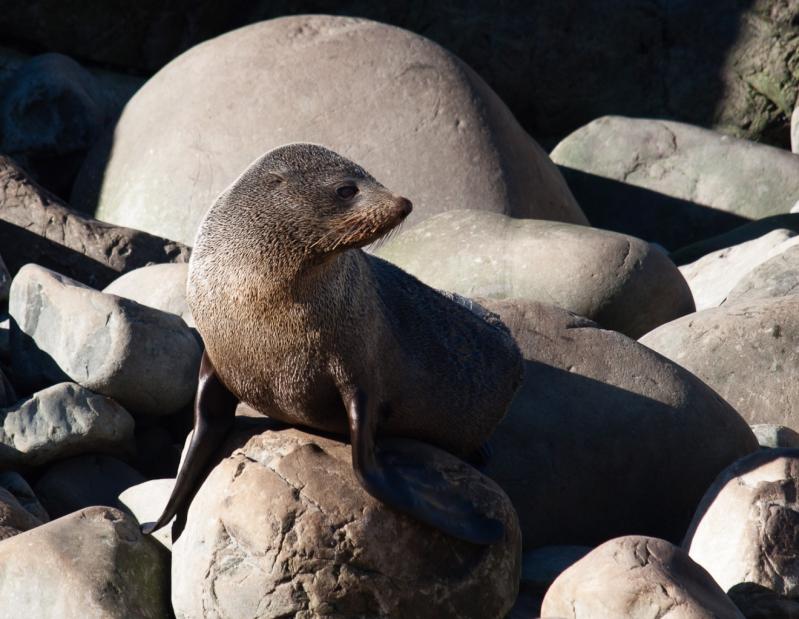
Parininihi Marine Reserve
Parininihi Marine Reserve captures a typical slice of the north Taranaki coastline, as well as the possibly unique sponge gardens of Pariokariwa reef.

The 1404ha Tapuae Marine Reserve lies on the rugged Taranaki coast close to New Plymouth. It adjoins the Ngā Motu/Sugar Loaf Islands Marine Protected Area and hosts a diverse and flourishing range of sea life.
The waters here cover a craggy labyrinth of pinnacles, canyons and caves, including the remains of an ancient volcano sitting at the northern end of Tapuae Marine Reserve, which is visible as a series of islands and rocks (their steep sides continue deep down beneath the water).
Their shelter provides a habitat for around 400 species of fish, especially around Seal Rock. These landforms are also encrusted with the usual reef species of sponges and shellfish, and colonies of bryozoans – tiny animals that build skeletons resembling coral.
The southern part of the reserve is typical of the wild Taranaki coast – reef, mud and sand below water, and black sand beaches above. About a third of the area is rocky reef, mostly cobble and boulder platforms. These scattered reefs shelter many species of marine animals and plants.
You may see New Zealand fur seals, as well as humpback, pilot, and southern right whales, and orca.

On calm days there are snorkelling opportunities off the beach at the Tapuae Stream end.
Back Beach, in the northern part of the reserve, is a popular surfing spot. It faces southwest and works one to 3.5 metres swells with breaks along a sandy beachfront. The various sandbars and gutters form good beach break waves.
You can also walk the length of the reserve from the Herekawe Stream to the Tapuae Stream (2 hours).
Good views of Tapuae Marine Reserve and the Sugar Loaf Islands can be gained from several lookouts along New Plymouth’s Centennial Drive. Centennial Park car park, immediately south of Paritutu Rock, offers the best views.

There’s good wildlife watching too – you’ll see New Zealand fur seals kekeno on and around the islands. Kekeno spend a lot of time on land in their rocky rest areas, called haul-outs. The males are bigger and more heavily muscled than the females and you may see the dominant bulls defending their territory by glaring, posturing and even fighting. Pups are born in the summer.